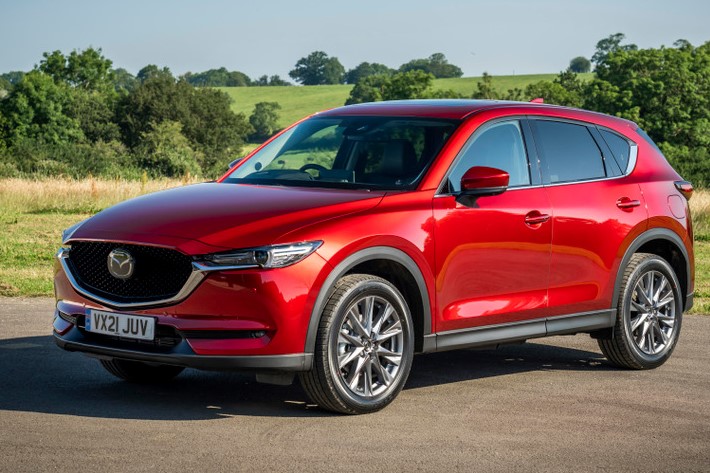Mazda’s top selling CX-5 is to get a big facelift in the new year which tells us why this year’s updates were fairly modest.
One theory was that the company was focussing on its hybrid/electric programme which is in full swing, but there will be ‘significant’ changes to the big SUV which will benefit from the new Skyactiv platform so we can expect improvements to ride comfort and handling, along with small styling changes, more models and, most significantly, drive mode selection.
Mazda clearly has its eyes set on the premium end of the market and has been knocking on the door for a while with regular upgrades to trim quality and technology but has never offered the option to switch drive modes, a given on Audi, Jaguar/Land Rover, BMW and Mercedes SUVs.
In the meantime the current CX-5 is still the company’s global best seller and in the UK second to my favourite, the CX-30. Unlike some of its Japanese rivals Mazda is sticking with a diesel variant which should see it through to E day in 2030 and that is good news for those with trailers and caravans.
CX-5 can haul just over two tonne with ease with the most powerful version pumping out a healthy 181hp and with its taught sporty suspension is an ideal tow car, stable and with strong pulling power. I towed my caravan more than 300 miles and returned 26.3mpg which is nothing special but about average for a four wheel drive with a lot of power.
Driven solo the Mazda is more impressive than some diesel rivals returning 51mpg on a leisurely 100 mile Sunday afternoon drive so a daily average in the low forties should be achievable.
The numbers and standard of SUVs has grown and grown in the last 10 years and CX-5 comfortably makes it into the top 10. As a driver’s car it gets high marks for handling with little of the body roll associated with these high siders although the Seat Tarraco featured here a few weeks ago just has the edge on that front.
The ride is generally smooth but there is too much road noise of rougher surfaces, a problem we are told, is being addressed on the new model.
The story is good inside as well with room for five adults and a flat boot floor than swallows plenty of luggage or a couple of adult bicycles without having to remove the front wheels. Levers in the boot side walls drop the seat backs which are split 40-20-40 and if you are high enough up the model range the tailgate is powered.
Dashboard layout is conservative compared to the futuristic designs in some rivals but it is neat, tidy, and user friendly with a new 10.2in central touchscreen which, heavens be praised, still has the rotary controller to scroll through the menus.
Mazda has always been ahead of the game with a driver head-up display and this one is spot on with speed, speed limit, navigation directions and a brilliant blind spot alert beamed on to the windscreen rather than the old fashioned flip up plastic panel which is still being used by some manufacturers.
The display’s blind spot markers change colour when a vehicle is overtaking and work in tandem with the audible warning and orange alert on the door mirrors and deserves an A star.
Equipment level is generous from the base model and there are plenty of bells and whistles at Sport grade with a powerful 10 speaker Bose sound system, powered front seats with memory for the driver, heated front seats and steering wheel and power tailgate on a long spec sheet.
Something that hasn’t changed since CX-5 first appeared in 2012 are the compliments for its elegant lines, not easy to achieve in a bulky SUV but Mazda designers pull it off with every model these days and there were plenty of admiring comments for my test car. Wisely styling changes next year are subtle so expect more of the same but better.
Fast facts
CX-5 Sport Auto AWD
£36,385
2.2 litre turbo diesel; 181bhp
0-62mph 9.6secs; 129mph
42.8mpg combined
173g/km. 1st VED £870
Insurance group 23
Boot 494-1608 litres










